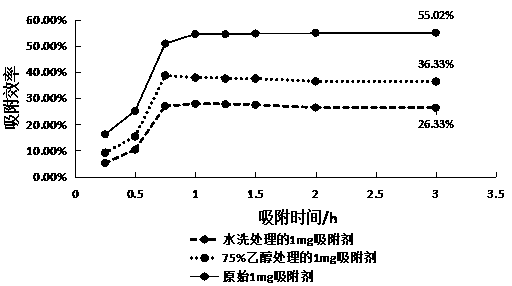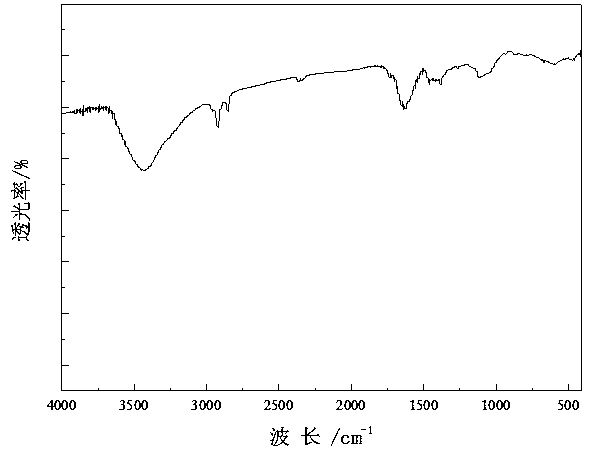Method for treating pesticide wastewater by recycling of graphene-based adsorbing material
An adsorption material, graphene-based technology, applied in adsorption water/sewage treatment, water/sewage treatment, chemical instruments and methods, etc.
- Summary
- Abstract
- Description
- Claims
- Application Information
AI Technical Summary
Problems solved by technology
Method used
Image
Examples
Embodiment 1
[0021] 1 Preparation of graphene-based adsorbent:
[0022] Add 0.6 g flake graphite and 1.0 g sodium nitrate to 35 ml concentrated sulfuric acid. Slowly add 3.0 g of potassium permanganate under constant stirring, and stir the reactant in a water bath at 5° C. for 2 hours. Subsequently, 150 ml of deionized water was slowly added to the reactant, and after the addition was completed, the temperature was raised to 98°C. The reaction solution was slowly added to 200 ml of preheated deionized water, and 10 ml of 30% hydrogen peroxide was added under stirring. Bubbles were generated during the transition from black to bright yellow in the dispersion. Centrifuge with a centrifuge to remove the residue to obtain a graphene oxide dispersion. The pH of the dispersion was brought to 7. Freeze drying dries the graphene oxide to a solid.
[0023] 2. The sewage is insecticide pesticide, chlorpyrifos.
[0024] Put 0.005 g-0.5 g of graphene oxide into solutions of different concentrati...
Embodiment 2
[0031] 1 Preparation of graphene-based adsorbent:
[0032] Add 0.6 g flake graphite and 1.0 g sodium nitrate to 35 ml concentrated sulfuric acid. Slowly add 3.0 g of potassium permanganate under constant stirring, and stir the reactant in a water bath at 5° C. for 2 hours. Subsequently, 150 ml of deionized water was slowly added to the reactant, and after the addition was completed, the temperature was raised to 98°C. The reaction solution was slowly added to 200 ml of preheated deionized water, and 10 ml of 30% hydrogen peroxide was added under stirring. Bubbles were generated during the transition from black to bright yellow in the dispersion. Centrifuge with a centrifuge to remove the residue to obtain a graphene oxide dispersion. The pH of the dispersion was brought to 7. Freeze drying dries the graphene oxide to a solid.
[0033] 2. The sewage is herbicide pesticide, hydroquinone.
[0034] 0.002 g-0.005 g of graphene oxide were placed in solutions of different conce...
PUM
 Login to View More
Login to View More Abstract
Description
Claims
Application Information
 Login to View More
Login to View More - Generate Ideas
- Intellectual Property
- Life Sciences
- Materials
- Tech Scout
- Unparalleled Data Quality
- Higher Quality Content
- 60% Fewer Hallucinations
Browse by: Latest US Patents, China's latest patents, Technical Efficacy Thesaurus, Application Domain, Technology Topic, Popular Technical Reports.
© 2025 PatSnap. All rights reserved.Legal|Privacy policy|Modern Slavery Act Transparency Statement|Sitemap|About US| Contact US: help@patsnap.com


